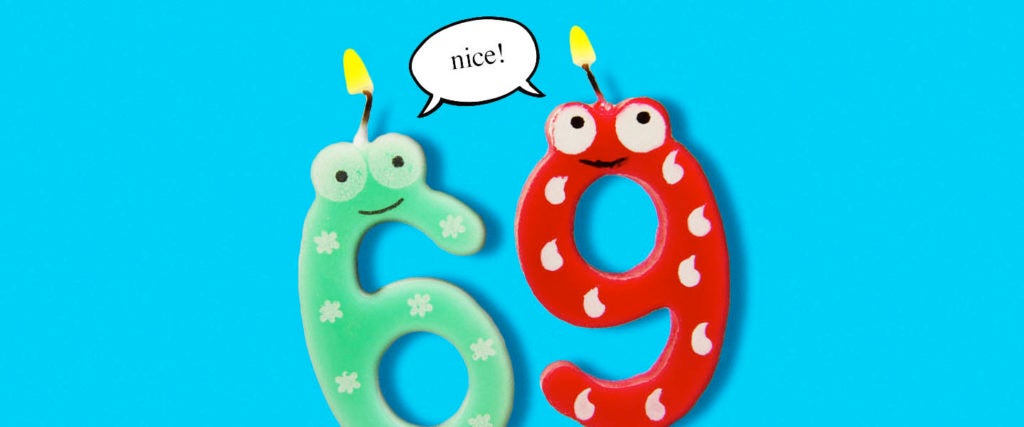It makes sense that people in their early 20s are happy. They have their whole lives in front of them — not to mention, faster metabolism and great skin. What’s far more surprising, though, is that happiness peaks again at a second point in our lives — right around our 69th birthdays. “The ‘happiest ages’ are indeed at these two ages,” economist Hannes Schwandt, a professor at Northwestern University who studies well-being, tells me.
Still, as an academic and not a frat bro, Schwandt never led with 69 when he researched this back in 2015. But as with most 69 references, word got out. “I never publicized these two ages, but a clever reporter at some point noticed it and declared 23 and 69 the happiest years,” he says.
To get to that very nice result, Schwandt analyzed data from the German Socio-Economic Panel that matched the life expectations to the life outcomes of 132,609 people. He found that though data can slightly vary from year-to-year or country-to-country, the distinct upswing we experience in our late 60s is relatively universal.
Schwandt originally set out to research why so many people experience midlife crises in their 40s. He found that general happiness occurs in a U-shaped curve that most of us don’t anticipate after our hot and happy 20s. Life satisfaction begins to decline throughout our 30s, as expectations remain high, and responsibilities mount with work, family and romantic relationships.
The downward spiral of a midlife crisis in our 40s tends to be followed by depression in our 50s over how many of our expectations were left unmet. But by the time we reach our late 50s, the bar finally lowers; we stop expecting so much out of life and become more satisfied almost by default. Reaching this point of almost imperceptible self-acceptance, people become content in ways they didn’t see coming. “Young people strongly overestimate their future life satisfaction while the elderly tend to underestimate it,” Schwandt wrote in the study. “This pattern is stable over time, observed within cohorts, within individuals and across different socio-economic groups.”
It’s important to note that having the happiest 69th birthday is dependent on two key factors — 1) physical health; and 2) close interpersonal relationships. To that second point, although marriage has been historically linked with better physical and mental health, a growing number of experts argue that close, healthy relationships in general can achieve the same effect. On the flip side, if someone goes throughout life without any sense of connection or community, their health is more vulnerable, and their happiness probably won’t rebound in their 60s the same way.
To the first point — physical health — this year is obviously a bit different for late sexagenarians, as we’re obviously in the throes of a deadly pandemic, meaning the curve may not apply to them. “The happiness curve can change due to specific experiences of individual cohorts,” Schwandt explains. For instance, after the collapse of the Soviet Union, the curve disappeared and was “replaced by a continuous happiness decline with age.”
The good news is, for most of us, the curve should return long before we turn 69. “My theory is that a lot of the u-shape is biological, so yes, things will likely return to the normal u-shape after the pandemic,” Schwandt says.
For which, of course, there can only be one response: Nice!

